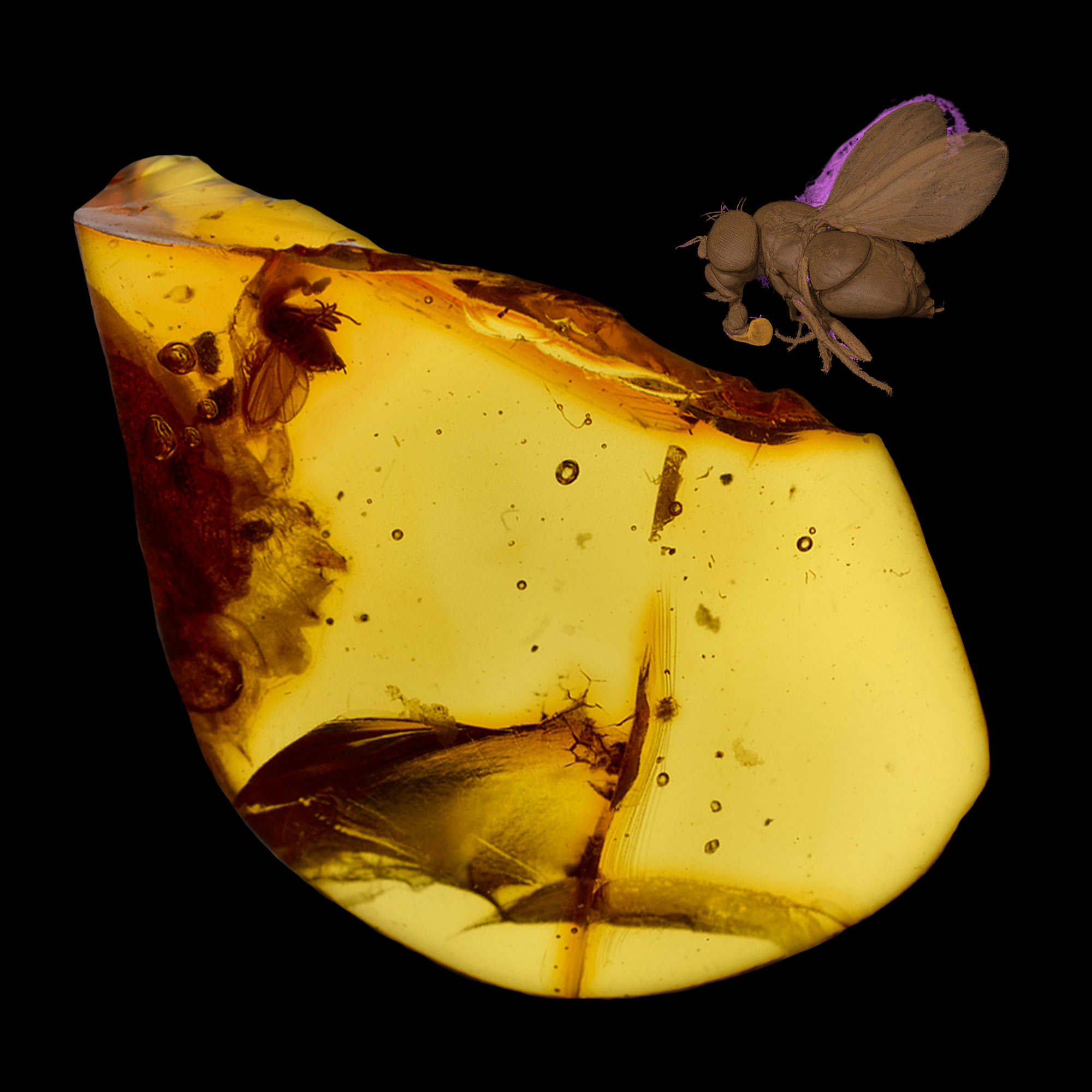
Insects in Amber
Amber, fossilized tree resin, can preserve the anatomy of a trapped insect down to the tiny hairs on the legs of a fly. Now with new powerful x-rays, scientists can see more than ever.
This exhibit contains detailed 3D x-ray scans of three pieces of amber from the Field Museum of Natural History in Chicago. Explore the same data as the scientists studying the anatomy and evolution of ancient insects with these unique pieces of amber containing three different insects.
Featured in This Exhibition
FLY IN AMBER
Amber—fossilized tree resin—can preserve the anatomy of a trapped insect down to the tiny hairs on the legs of a fly. Now with new powerful x-rays, scientists can see more than ever.
Data by The Field Museum of Natural History, Chicago, US
ROVE BEETLE IN AMBER
This rove beetle specimen is surrounded by cracks and air bubbles, making details hard to see with traditional microscopes. With high-resolution scans, scientists can remove obstructions and get a close look at and inside the specimen.
Data by The Field Museum of Natural History, Chicago, US
SPIDER IN AMBER
Picking out the spider in this amber piece isn’t easy for the untrained, or even trained, eye. The specimen is hidden by wood pieces. However, thanks to powerful x-rays, we can finally take a close look.
Data by The Field Museum of Natural History, Chicago, US
